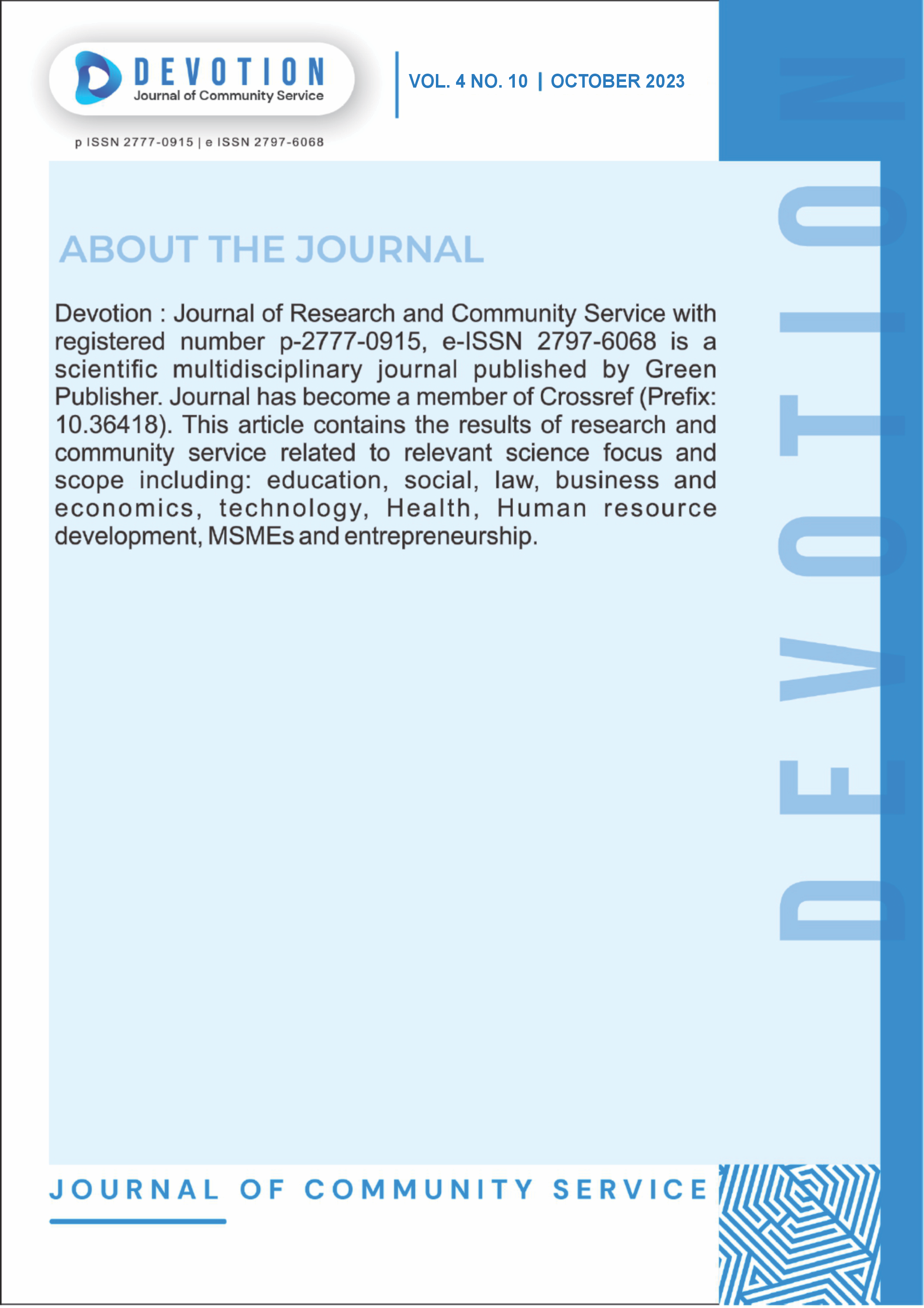The Effect of Vermicompost Fertilizer and Effective Microorganisms (EM4) on The Growth and Yield of Shallots (Allium ascalonicum L) Bima Brebes Cultivars
DOI:
https://doi.org/10.59188/devotion.v4i10.554Keywords:
Vermicompost Fertilizer, Effective Microorganisms (EM4) , ShallotAbstract
This study aims to determine the effect of vermicompost fertilizer dose interaction and effective microorganisms (EM4) on the growth and yield of onion plants (Allium ascalonicum L.) cultivar Bima Brebes. The research was carried out in Karangwangun Village, Babakan District, Cirebon Regency – West Java, from February to May 2023. The design used is an experimental method with a factorial pattern Group Random Design (RAK), consisting of two factors, namely vermicompost fertilizer and effective microorganisms (EM4). Application of vermicompost fertilizer (K), which consists of 3 levels, namely: K1 = 5 tons / ha, K2 = 10 tons / ha, and K3 = 15 tons / ha; Effective Microorganism Factor (EM4) (E) which consists of 3 levels, namely: E1 = EM4 5 cc / Liter of water, E2 = EM4 10 cc / Liter of water, and E3 = EM4 15 cc / Liter of water. Each treatment or experimental unit was repeated three times for a total of 27 plots. Data analysis was carried out using fingerprints and follow-up tests with the Duncan Multiple Distance Test at the level of 5%. The variables observed were plant height (cm), number of leaves per clump (strands), number of saplings per clump (fruit), tuber diameter (cm), weight of fresh tubers per clump, weight of fresh tubers per plot, weight of dry tubers per clump and per plot. The results showed that: (1) there was no interaction between vermicompost fertilizer application and effective microorganisms (EM4) on all observation parameters, (2) The independent effect of vermicompost fertilizer application had a significant effect on the average variable weight of fresh tubers per plot. Meanwhile, the treatment of effective microorganisms (EM4) has an independent effect on the average plant height variable aged 21 days after planting (HST).
Published
Issue
Section
License
Copyright (c) 2023 Anggif Agistha Nurrizky, Nurul Fadilah, Ibnu Maulana, Achmad Faqih

This work is licensed under a Creative Commons Attribution-ShareAlike 4.0 International License.
Authors who publish with this journal agree to the following terms:
- Authors retain copyright and grant the journal right of first publication with the work simultaneously licensed under a Creative Commons Attribution-ShareAlike 4.0 International. that allows others to share the work with an acknowledgement of the work's authorship and initial publication in this journal.
- Authors are able to enter into separate, additional contractual arrangements for the non-exclusive distribution of the journal's published version of the work (e.g., post it to an institutional repository or publish it in a book), with an acknowledgement of its initial publication in this journal.
- Authors are permitted and encouraged to post their work online (e.g., in institutional repositories or on their website) prior to and during the submission process, as it can lead to productive exchanges, as well as earlier and greater citation of published work.













